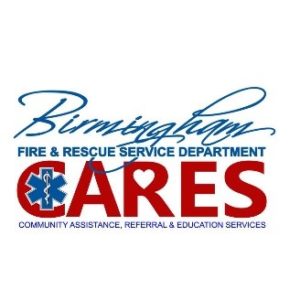Did you know that Jefferson County has more primary care providers than state and national averages, yet 20% of the adult population is not connected to a medical home.* This means that many residents lack consistent primary care and preventive services, which can result in worsening or mismanaged chronic conditions and more Jefferson County residents ending up in local emergency departments.
United Way of Central Alabama (UWCA) is pleased to support collaborative Bold Goals Health projects working on innovative solutions to meet the health needs of the community. Through a three-year UWCA grant, St. Vincent’s Health System, Birmingham Fire and Rescue Services and Christ Health Center are working together to prevent unnecessary hospitalizations and connect heart-failure and COPD patients to a medical home for continued care. This will preserve emergency resources for life-saving medical evaluations, improve patient outcomes, improve the health of the population and reduce costs.
 In coordination with social workers from St. Vincent’s IMPACT program, Birmingham Fire and Rescue CARES (Community Assistance, Referral and Education Services) staff will implement the “Prevention through Intervention” home-visiting program for recently discharged heart-failure and COPD patients who frequently call 911 for non-emergent complaints. Services will include wellness checks, medication monitoring, home safety assessments, reinforcement of education and links to primary care when appropriate.
In coordination with social workers from St. Vincent’s IMPACT program, Birmingham Fire and Rescue CARES (Community Assistance, Referral and Education Services) staff will implement the “Prevention through Intervention” home-visiting program for recently discharged heart-failure and COPD patients who frequently call 911 for non-emergent complaints. Services will include wellness checks, medication monitoring, home safety assessments, reinforcement of education and links to primary care when appropriate.
“As a health system, we are constantly searching for ways to improve the patient’s ability to access the right level of care, at the right place, in the right way,” said St. Vincent’s Foundation President Susan Sellers. “By partnering with Birmingham Fire and Rescue Services and Christ Health Center in such an innovative way, patients can be seen in their homes, in the outpatient clinic setting or at the hospital based on what provides the best care for them. This is enhanced by the regular contact from the IMPACT team through phone and text.”
During the next three years, the project seeks to accomplish two primary goals: partner with hospitals and community healthcare providers to more effectively meet the needs of high-risk patients; and better serve patients who frequently call 911 for non-emergent complaints in order to preserve emergency resources for life-saving medical evaluations, treatment and transport.
As an evidence-based intervention, this approach has proven successful in many locations throughout the U.S., and we look forward to their collaborative success!
*(STVHS Community Health Needs Assessment, 2016)

